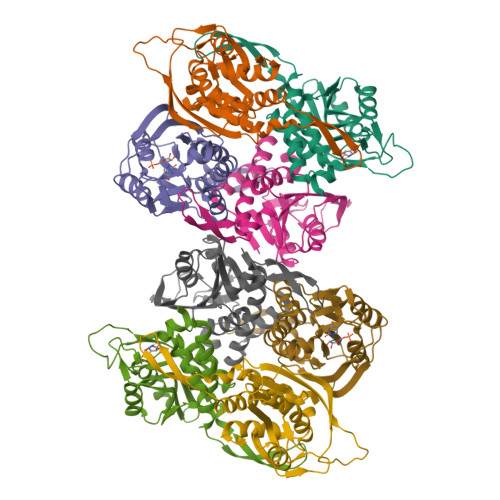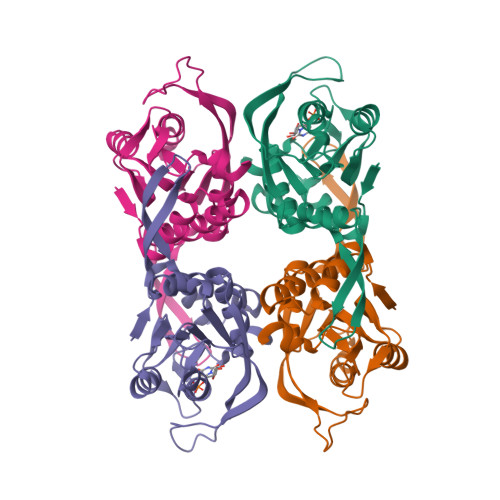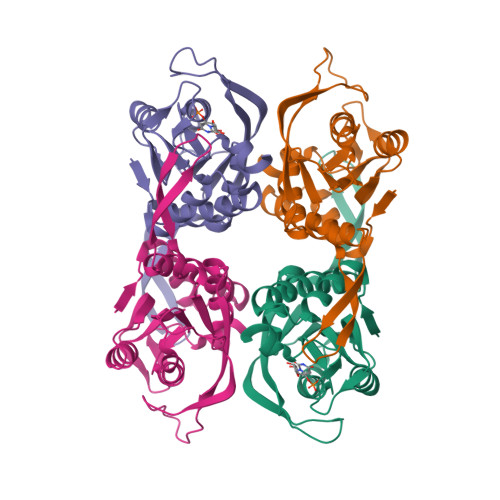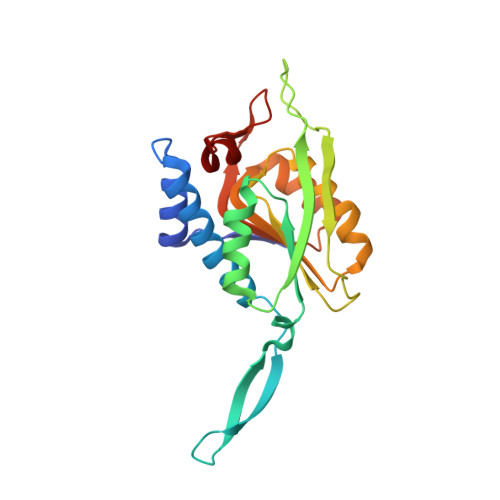Allosteric Regulation and Communication between Subunits in Uracil Phosphoribosyltransferase from Sulfolobus solfataricus(,)
Arent, S., Harris, P., Jensen, K.F., Larsen, S.(2005) Biochemistry 44: 883-892
- PubMed: 15654744
- DOI: https://doi.org/10.1021/bi048041l
- Primary Citation of Related Structures:
1XTT, 1XTU, 1XTV - PubMed Abstract:
Uracil phosphoribosyltransferase (UPRTase) catalyzes the conversion of 5-phosphate-alpha-1-diphosphate (PRPP) and uracil to uridine 5'-monophosphate (UMP) and diphosphate. The UPRTase from Sulfolobus solfataricus has a unique regulation by nucleoside triphosphates compared to UPRTases from other organisms. To understand the allosteric regulation, crystal structures were determined for S. solfataricus UPRTase in complex with UMP and with UMP and the allosteric inhibitor CTP. Also, a structure with UMP bound in half of the active sites was determined. All three complexes form tetramers but reveal differences in the subunits and their relative arrangement. In the UPRTase-UMP complex, the peptide bond between a conserved arginine residue (Arg80) and the preceding residue (Leu79) adopts a cis conformation in half of the subunits and a trans conformation in the other half and the tetramer comprises two cis-trans dimers. In contrast, four identical subunits compose the UPRTase-UMP-CTP tetramer. CTP binding affects the conformation of Arg80, and the Arg80 conformation in the UPRTase-UMP-CTP complex leaves no room for binding of the substrate PRPP. The different conformations of Arg80 coupled to rearrangements in the quaternary structure imply that this residue plays a major role in regulation of the enzyme and in communication between subunits. The ribose ring of UMP adopts alternative conformations in the cis and trans subunits of the UPRTase-UMP tetramer with associated differences in the interactions of the catalytically important Asp209. The active-site differences have been related to proposed kinetic models and provide an explanation for the regulatory significance of the C-terminal Gly216.
Organizational Affiliation:
Centre for Crystallographic Studies, Department of Chemistry, University of Copenhagen, Universitetsparken 5, DK-2100 Copenhagen Ø, Denmark.


















